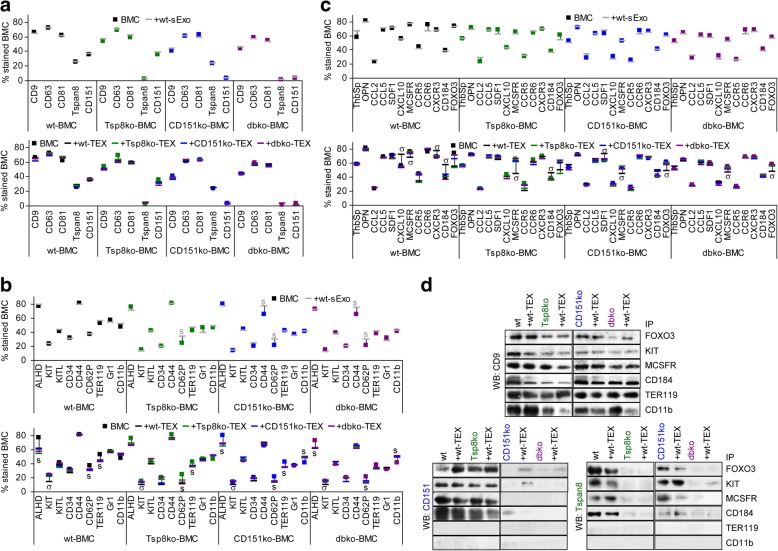Fig. 7.
The impact of Tspan8 and CD151 on hematopoiesis. The impact of Tspan8 and/or CD151 on hematopoietic cells and hematopoietic cell modulation by wt-sExo or -TEX was evaluated in vitro using freshly harvested BMC, cultured for 48 h–72 h with sExo and TEX. a-c Flow-cytometry analysis of tetraspanins, progenitor markers, growth factors and receptors, chemokines and receptors andFOXO3 after culture with wt-sExo or wt- and ko-TEX; mean values of triplicates are shown, significant differences by coculture with wt-sExo are indicated by s (grey), by coculture with wt- and ko-TEX by s (black), by coculture with wt-TEX by σ; d Untreated and wt-TEX-treated wt- and ko-BMC lysates were precipitated with FOXO3, KIT, MCSFR, CD184, TER119 and CD11b and blotted with anti-CD9, -CD151 and -Tspan8. Wt-sExo rescued CD44 and CD62P expression in ko-BMC. Wt- and ko-TEX provoked a slight reduction of ALDH1+, the megakaryocyte marker CD62P and the erythroid progenitor marker TER119 and promoted myeloid progenitor expansion, indicating that these effects were Tspan8- and CD151-independent; altered cytokine and receptor expression was mostly restricted to wt-TEX treatment. Receptors and FOXO3 coimmunoprecipitated with Tspan8 and CD151. Only CD9 coimmunoprecipitated with TER119 and CD11b. The association of Tspan8 and CD151 with RTK and GPCR might support homing and settling of MCA in the BM

